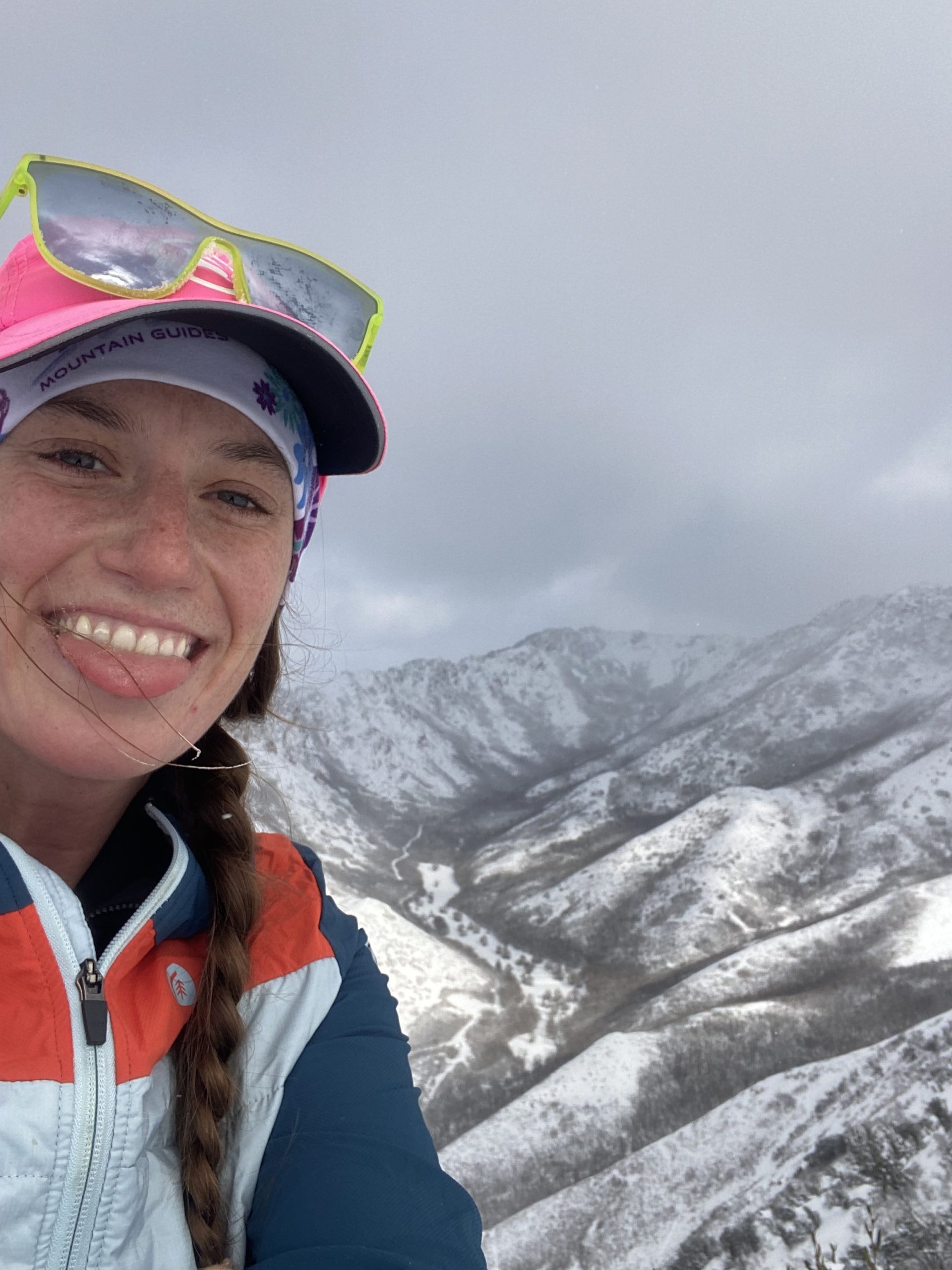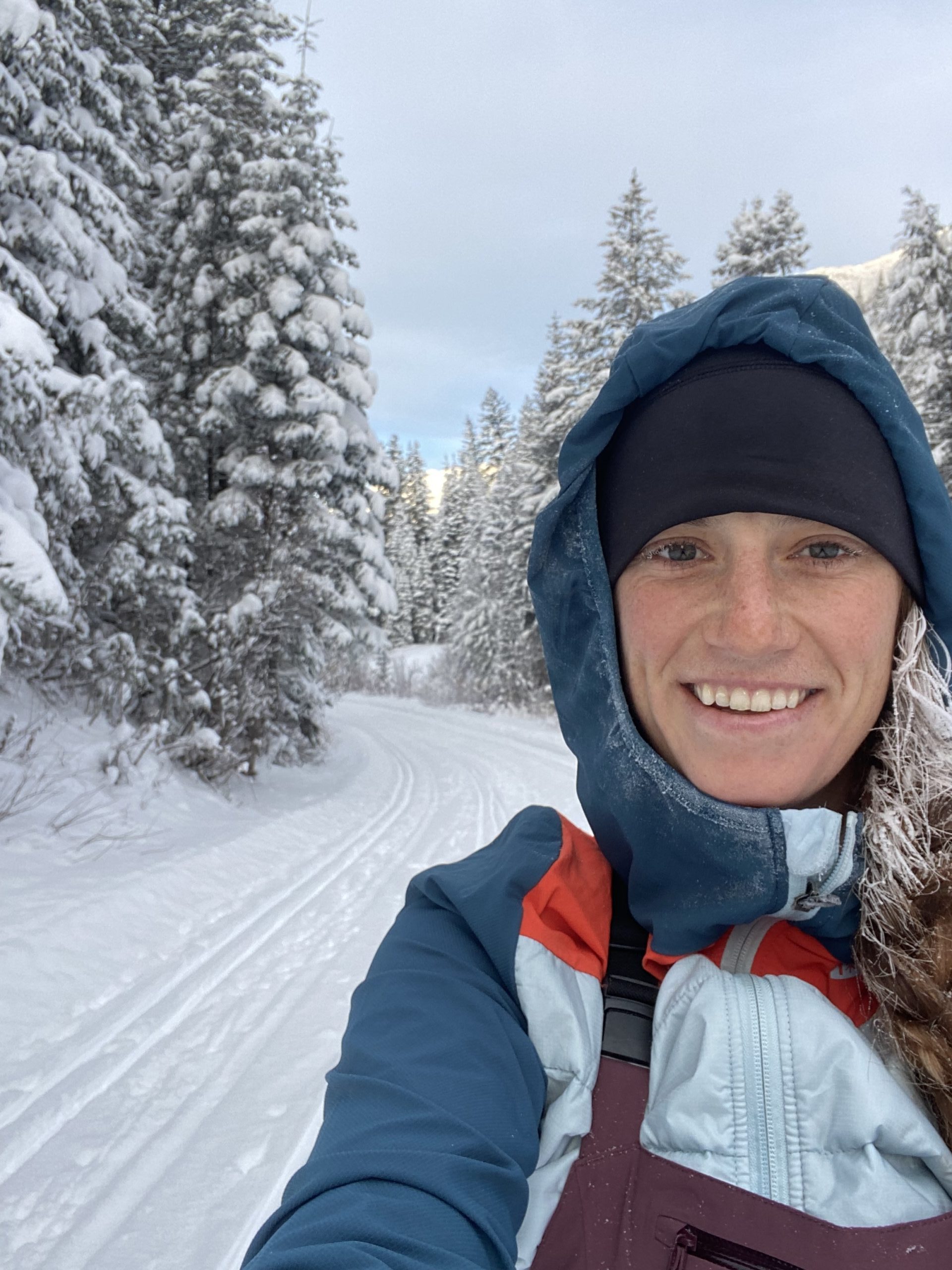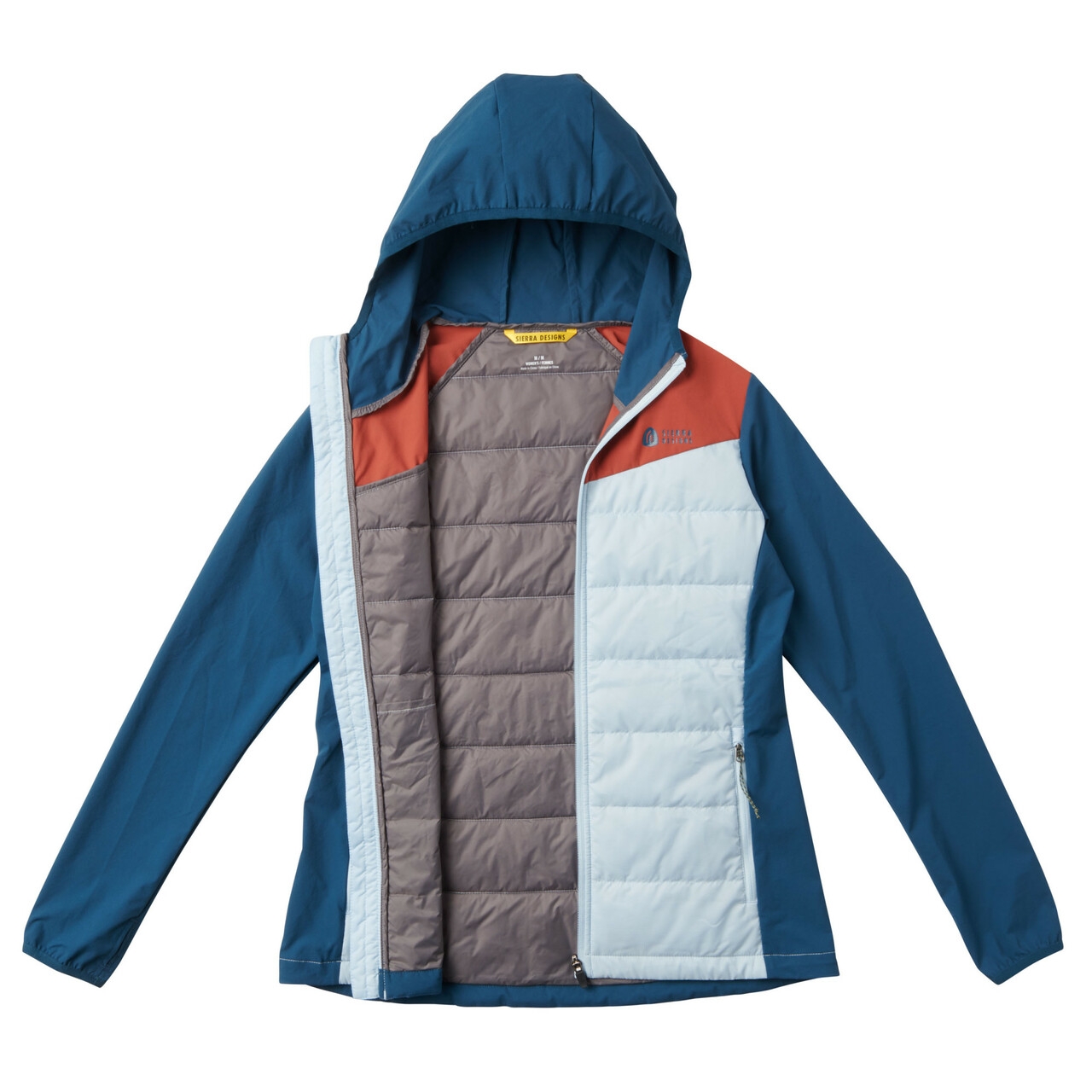Sierra Designs Borrego Hybrid Jacket Review
Anyone else stop to de-layer 10 minutes into every hike? I truly cannot remember a time that I’ve actually worn my down jacket during an entire hike or day backpacking without feeling uncomfortably hot and sweaty. It’s so difficult to find layers that simultaneously keep you warm without overheating while engaging in high-output activities. This winter, I’ve been testing the Sierra Designs Borrego Hybrid Jacket as a lighter insulated layer for a wide range of activities.
With a soft-shell design on the arms, shoulders, and hood, this is a thin and low-profile layer. However, there are also two large panels of micro-insulation across the entire back and down the center from the chest. This provides warmth where you need it most: your core. It almost feels like wearing a thin long sleeve layer with a lightweight insulated vest over it. Warmth where you need it, and minimal breathable design where you don’t.
Sierra Designs Borrego Hybrid Jacket At a Glance
- MSRP: $129.95
- Weight: 7.25 ounces
- Materials:
- Shell: 100% Recycled Polyester Taffeta (Body) 88% Nylon, 12% Spandex 4-way Stretch (Sleeves/Hood)
- Lining: 100% Nylon
- Best Use: Outer layer for warm weather, base layer for cold weather, casual
Circumstances of Review
I’ve used the Sierra Designs Borrego Jacket for a variety of activities this winter in Salt Lake City. I’ve used it as an outer layer on warmer hikes, a base layer for extremely cold backcountry skiing, and an extra emergency layer for trail runs and summit hikes. Unfortunately, most of these endeavors have been solo so most pretty much all of my photos are necessarily selfies.
READ NEXT – Clothing for an Appalachian Trail Thru-Hike: Our Recommended System, Fabrics, and Products
My Favorite Features

The soft-shell arms do a really nice job of repelling light precipitation. I hate bringing a full shell jacket for a 30% chance of rain.
- Stretchy soft-shell material: The material across the arms is lightweight, breathable, and stretchy. It’s perfect for a range of activities, from walking the dog to packing up a campsite in the morning. Plus, the material on the arms is much stronger than a typical lightweight down jacket so I don’t have to worry about snagging it on branches and trees.
- Fitted hood: The hood on this jacket is nice and snug. It makes it perfect as a base layer, where you can add a beanie or fleece headband over the top of it. I love pulling the hood up under my beanie because it helps protect my neck from the wind too.
- Large hand pockets: The hand pockets are extremely large and zippered for protection. I love using them to store my micro spikes on winter trail runs. Additionally, they’ve been a great place for snacks, gloves, headbands, and any other small layers that may need to come on and off during a hike.
Where Am I Taking the Borrego Jacket?

I am SO happy I had this jacket in my pack this day. It was about 15 degrees, and it was an emergency layer in case there was wind on the summit I was tagging. Which there was. This was the best selfie I could muster before sloshing back down through snow.
Honestly, I’ve found a use for this jacket for pretty much every activity I’ve done this weekend. My two favorite uses so far have been as an outer layer for extremely cold trail running, and as a base layer for backcountry skiing. For both of these sports, I have a hard time finding a layer for this scenario that is warm enough yet also breathable. I’m also excited to have this in my pack as a summit layer for summer activities, as opposed to a down jacket which usually seems too warm.
Pros

Clearly working through a very cold day. This jacket has been perfect for high-output activities in extreme cold. The micro insulation is warmer than typical base layers, but it’s not as heavy/stuffy as a full synthetic or down jacket.
- Price: For $130, this is much more affordable than competing mid-layers. It is significantly less warm, but it’s a wonderful option for summer backpacking and hiking or extremely high output activities in cold weather.
- Versatility: I’ve already used this a ton of different ways. It’s served me well as a soft-shell for a drizzly hike, a base layer for an extremely cold backcountry ski tour, and an extra outer layer for a windy summit run. It’s a unique jacket that can be used in a ton of different ways when a down jacket is too heavy/warm.
- Colorways: I promise this isn’t something that dictates my decisions, but I love the fun colorways of this jacket. They’re totally different from any others on the market. I have the Bering/Ice Blue mix, but there’s also a Black/Gray and a Doeskin/Turtledove which is a lighter tone.
- Weight: I love having a jacket this light in my lineup. It’s perfect for those in-between hikes or backpacking trips where you want a mid layer that is insulated, but not too hot, stuffy, or heavy. It’s also perfect to throw into a running vest or ultralight day pack for quick day trips.
Cons

The body of the jacket fits me perfectly, but the arms are a bit too short for the thumbholes to fit comfortably
- Funky sizing: I’m a solid medium in pretty much everything, and I was disappointed in the length of the arms on this jacket. I can’t quite comfortably get my hands through the thumbholes without feeling like my shoulders are too tight. This is okay when I’m using it as a base layer or over a thin long sleeve, but it’s a little too tight over thicker base layers. For reference, I’m 5’10, but this hasn’t really been a problem in any other jackets for me. Consider sizing up if you plan to use it over thicker base layers.
- Micro-insulation sticks to skin: If you’re wanting to use this as your base layer, you’ll also need a quality tank top or t-shirt to go underneath. As you start to sweat, the micro-insulation sticks to your skin and creates a quite uncomfortable clammy yet chilly feeling. I knew this was a possibility from my experience of wearing down jackets over a tank top but was hoping this lower profile of insulation would be able to be worn next to skin.
Overall Impressions
Though this isn’t the highest warmth-to-weight jacket on the market, I absolutely love having it in my upper layer lineup. I am most impressed with its ability to keep me warm without overheating during high output activities in the winter. The thin sleeves combined with micro-insulation keep your core warm without excessively sweating everywhere on your body. I most likely wouldn’t choose this jacket for backpacking trips where weight and warmth are the highest priorities. However, I’m very excited to use it this summer as a summit and descending layer. For $130, it’s a great deal for anyone looking to add some versatility to their layering system.
Shop the Sierra Designs Borrego Hybrid Jacket
Comparable Jackets
The North Face Progressor Hybrid Insulated Jacket
- MSRP: $199
- Weight: Unvailable
- Materials: Synthetic Insulation, 50% polyester / 50% nylon
Marmot Variant Hybrid Jacket
- MSRP: $190
- Weight: 11.7 ounces
- Materials: Synthetic Insulation, 94% Polyester / 6% Elastane
Outdoor Research Ferrosi Hooded Jacket
- MSRP: $130
- Weight: 15 0z
- Materials: 86% nylon / 14% spandex (full softshell jacket)
The Sierra Designs Borrego jacket was donated for purpose of review.
This website contains affiliate links, which means The Trek may receive a percentage of any product or service you purchase using the links in the articles or advertisements. The buyer pays the same price as they would otherwise, and your purchase helps to support The Trek's ongoing goal to serve you quality backpacking advice and information. Thanks for your support!
To learn more, please visit the About This Site page.




